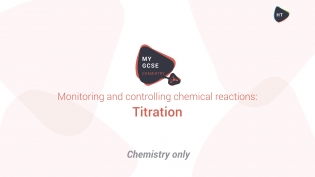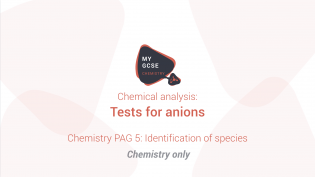
This video is a guide to your practical activity on measuring rates of reaction. You will be investigating how changes in concentration affect the rates of reactions, using the example of the disappearing cross experiment.

This video describes the elements in Group 7 of the periodic table, otherwise known as the halogens. You will learn about the properties and trends in the reactions of halogens as well as the practical activity on reactivity trends.

Titration is an important experimental method in Chemistry: using precise apparatus to accurately measure how much acid neutralised a given volume of alkali (or vice versa). In this video, you will learn how to set up a titration for your practical activity, how to record measurements, and how to calculate the concentration of an unknown solution using titration.
Note: this video is for Higher Tier only.

In this video, you will learn how electrolysis of aqueous ionic compounds differs from the electrolysis of molten salts you have seen so far. The practical activity on electrolysis is to investigate what happens when aqueous solutions are electrolysed using inert electrodes. So, in this video, you will learn the rules that will help you to predict which elements are formed at the cathode and the anode when electrolysing aqueous solutions.

Salts are very common chemical compounds consisting of a metal part and a non-metal part. They are usually made by reacting a metal, metal oxide or carbonate with an acid. In this video, we will detail the method needed for the practical activity on production of salts.

In this video, we will look at some different types of chromatography. We will look at how to set up a paper chromatography or thin layer chromatography experiment and explain in detail how it is used to separate and tell the difference between coloured substances. You will also learn what an Rf value is and how to calculate it.

In this video, you will learn to describe, explain and give examples of the following methods of separating mixtures: filtration, crystallisation, distillation, fractional distillation.

Anions are negatively charged ions such as halides (Cl–, Br–, I–), sulfates (SO42-), and carbonates (CO32-). In this video, we will discuss the test tube tests for these ions, which all relate to the practical activity in this topic: use of chemical tests to identify the ions in unknown ionic compounds covering the both metal ions (cations) and non-metal ions (anions).